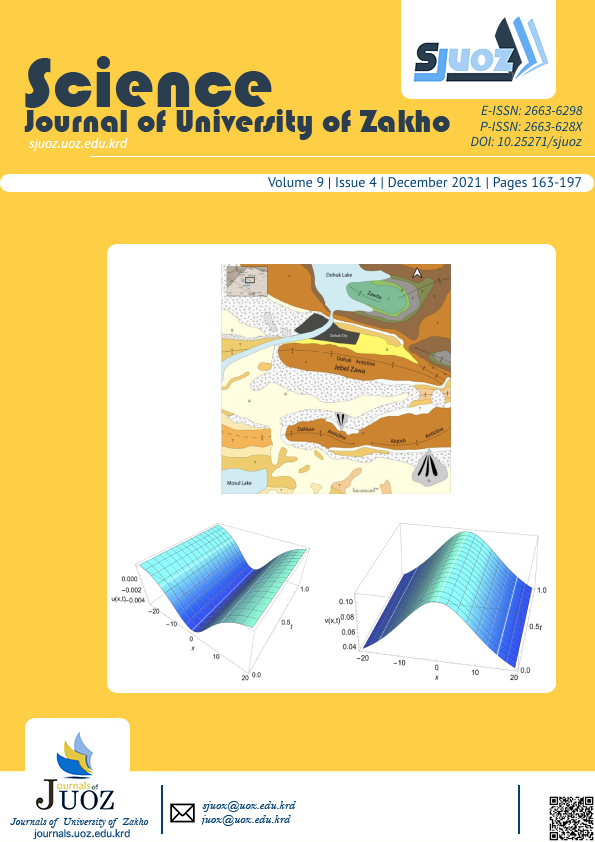Effects of Deposition Time And PH on The Characterization of Chemically Synthesized Composite Nano-Wires of Cu2S Thin Films
Abstract
The chemical bath deposition technique (CBD) had used for depositing Cu2S thin films on the glass substrates. It found that thickness and deposition rate were significantly dependent on deposition parameters (deposition time and pH value). XRD data indicates that at different deposition times and pH values are given amorphous structure except for the deposited thin film of (8hours) and, pH of (10.4) the structure was crystalline. The morphology of the deposited thin films remarkably changed as the deposition time increased. Optical transmittance measurements illustrate that transmission of the thin films decreases from 93.27% for a deposition time of 4 hours to 81.73 for deposition time of 10 hours and, the maximum transmission rate of the films is 95.21 % with pH=8.4 and decreases to 28.39 % with pH=11.4. Also, optical studies revealed that Cu2S thin film with direct energy bandgap decreased from 3.04 to 2.78 eV as deposition time increased and from 3.09 to 2.32 eV as pH increased.
Full text article
Authors
Copyright (c) 2021 Honar S. Ahmed, Raghad Y. Mohammed, Mohammed Hussein Khalil

This work is licensed under a Creative Commons Attribution 4.0 International License.
Authors who publish with this journal agree to the following terms:
- Authors retain copyright and grant the journal right of first publication with the work simultaneously licensed under a Creative Commons Attribution License [CC BY-NC-SA 4.0] that allows others to share the work with an acknowledgment of the work's authorship and initial publication in this journal.
- Authors are able to enter into separate, additional contractual arrangements for the non-exclusive distribution of the journal's published version of the work, with an acknowledgment of its initial publication in this journal.
- Authors are permitted and encouraged to post their work online.
